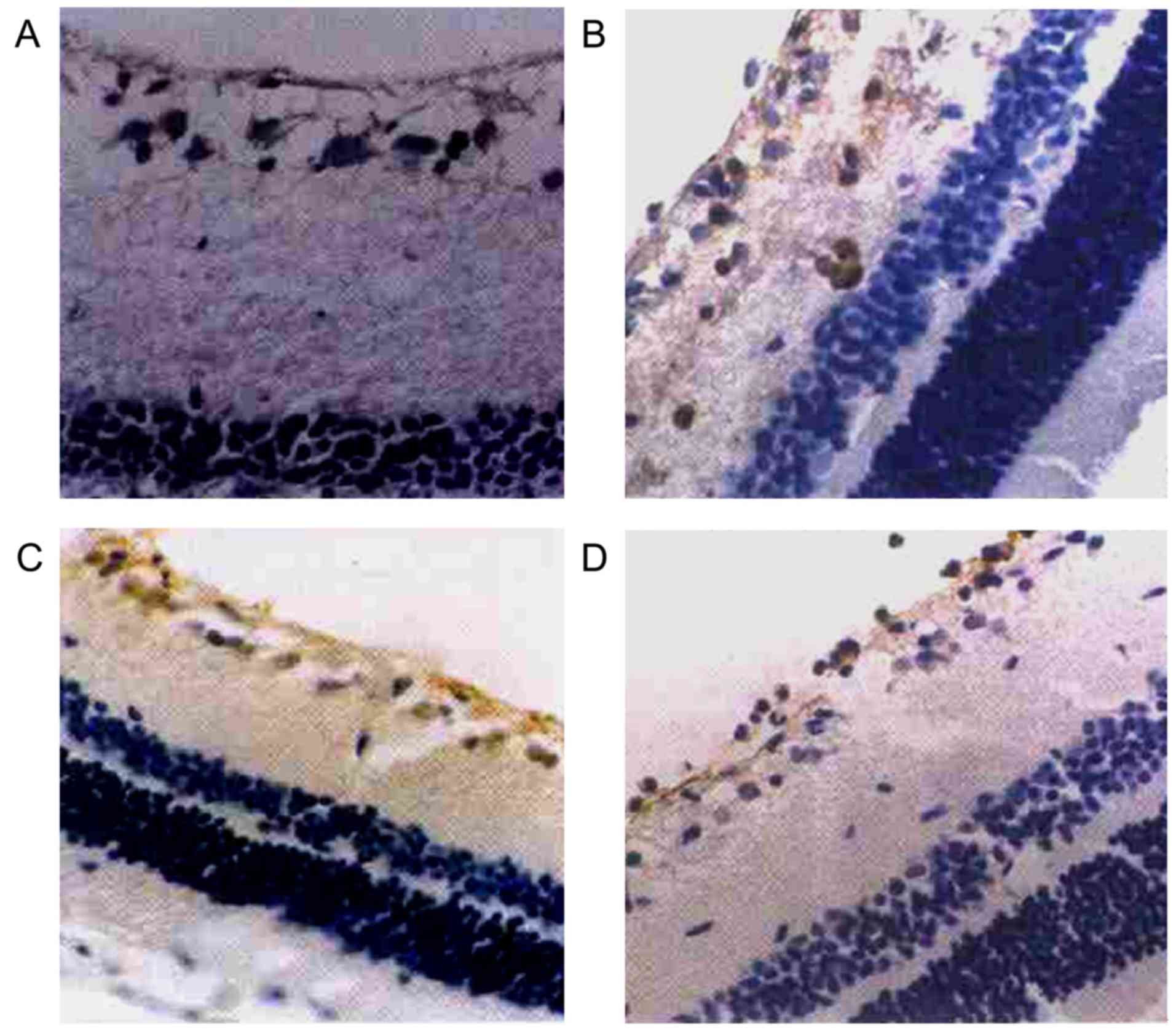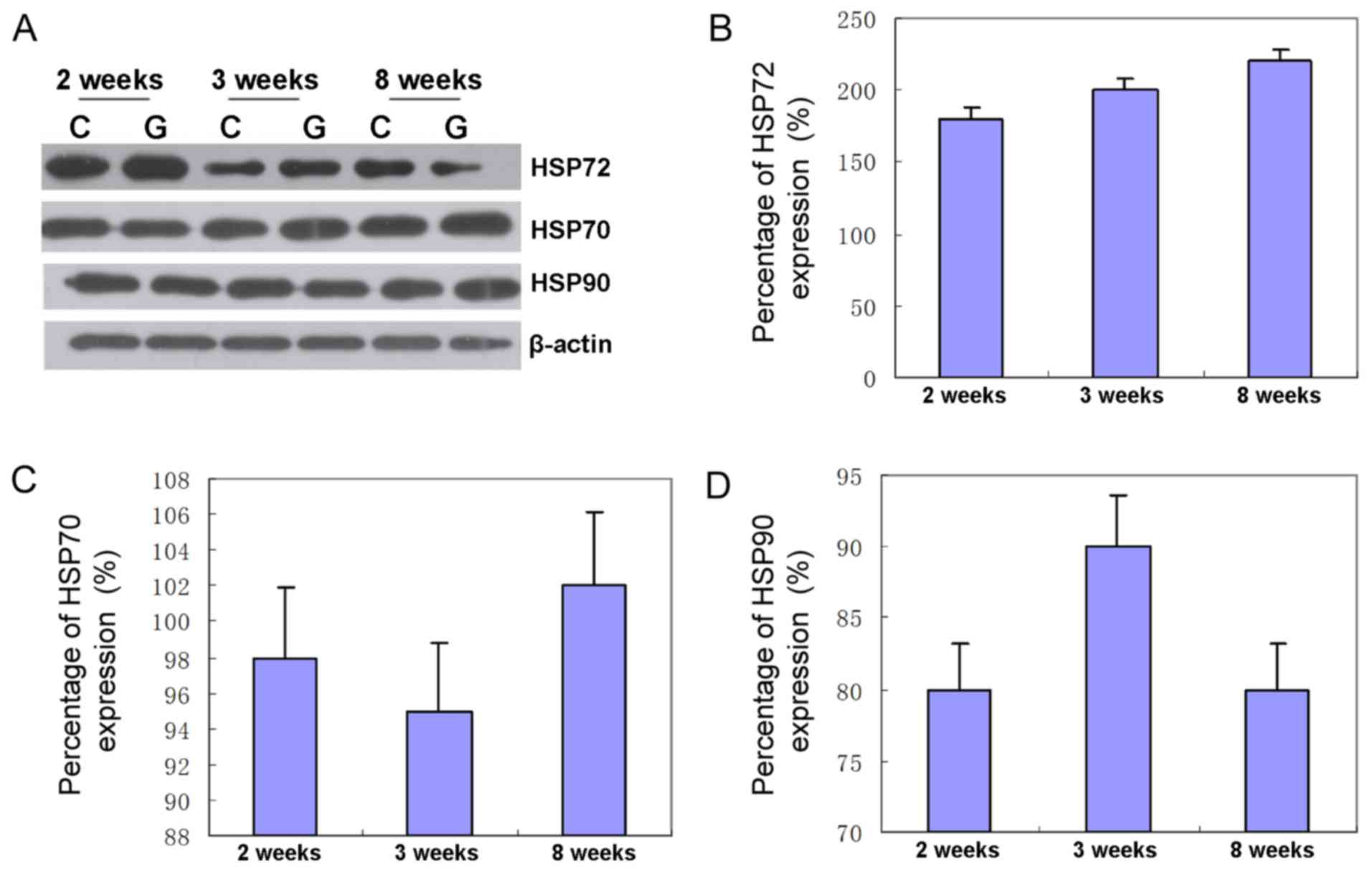Evaluation of heat shock protein (HSP-72) expression in retinal ganglion cells of rats with glaucoma
- Authors:
- Published online on: June 21, 2017 https://doi.org/10.3892/etm.2017.4635
- Pages: 1577-1581
-
Copyright: © Wang et al. This is an open access article distributed under the terms of Creative Commons Attribution License.
Metrics: Total
Views: 0 (Spandidos Publications: | PMC Statistics: )
Total PDF Downloads: 0 (Spandidos Publications: | PMC Statistics: )
Abstract
The present study was planned to observe the expression of heat shock protein 72 (HSP72) in retina of rats in a glaucoma model. A total of 50 Wistar rats were randomly divided into the high intraocular tension group (glaucoma model) and the sham control (sham operation) group. Glaucoma rat models were created by application of electrocoagulation on at least three groups of veins, reduction of venous return of aqueous humor and by enhancement of intraocular tension at the same time; 1, 2, 3, 4 and 8 weeks after operation, the intraocular tension of rats was observed respectively, and the expression/distribution of HSP72 in retina was assessed by immunohistochemical detection. As a result, the high intraocular tension group was found with obviously increased intraocular tension of the right eyes after operation (P<0.05), which was stable after one week. It was observed that the positive expression of HSP72 in retina gradually increased significantly with increase in intraocular tension in the rat model of glaucoma in comparison to controls. Furthermore, retinal ganglion cells (RGCs) of rats from both groups were cultured respectively, for confirmation. It was observed that the expression levels of HSP72 in the high intraocular tension group were higher in comparison to the sham control group. In conclusion, the enhanced expression of endogenous HSP72 may play an important role in glaucomatous optic neuro-protection.











